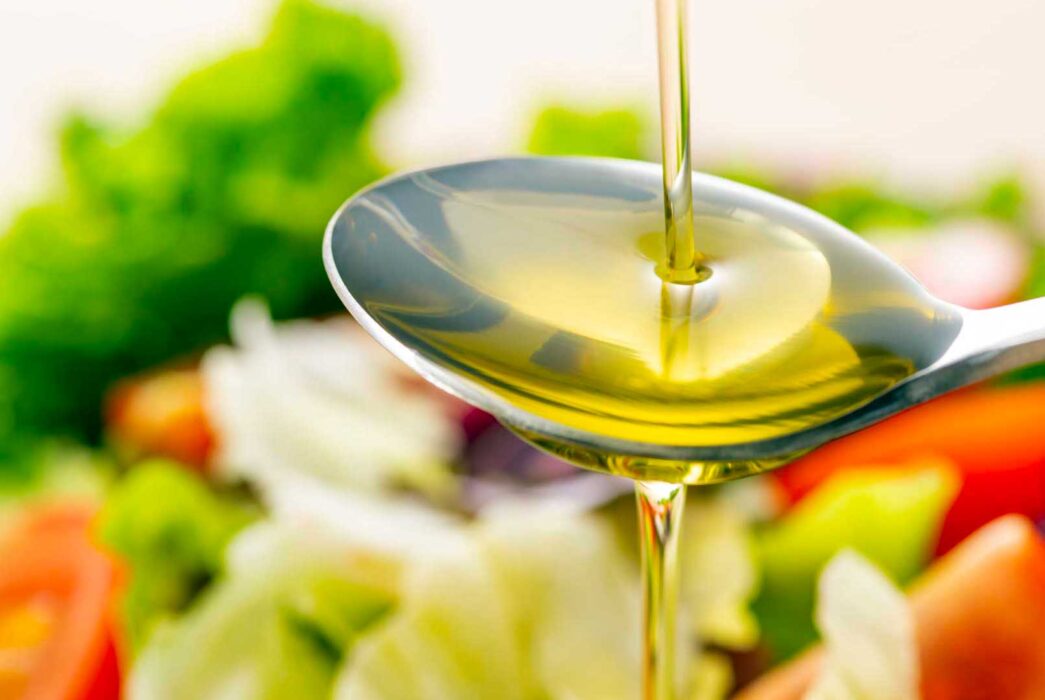
After more than twenty years dedicated to sensory analysis of virgin olive oils and spent tasting the excellence of olive oil from both “our” northern hemisphere, as from the “new” southern hemisphere, I try to answer a question asked by a young “colleague” little more than eleven years old.
The question is intriguing: “Antonio, tell me in a few words what are the 10 most beautiful sensations that can be found in a quality EVOO”.
I try to answer the learned colleague.
Here are the 10 pleasant sensations you can (and should) find in extra virgin olive oil.
The tasting of olive oil, in its extra virgin category, can trigger pleasant sensations even to a neophyte.
In fact, within the EVOO, you can find an infinite range of aromas and flavors, that we would never imagine and whose origin I try to explain.
The aromas and scents of EVOO depend on various factors, above all the variety of the olive, which inexorably characterizes the organoleptic profile of the olive oil being tasted.
Among other factors, we can mention the geographical region, climate, and soil where the plants are grown, agronomic factors (cultivation operations, fertilization, irrigation), the stage of ripeness of the olives, and the type of extraction and the olive mill used.
Perhaps not everyone knows that it is the mill itself, with healthy and fresh olives, that makes the difference, positively and unfortunately also negatively, on the final quality.
Let’s try to understand what happens in the olive mill during the pressing and the extraction of oil from olives. As mentioned, this is the right moment to “create” the aromas and flavors of an excellent EVOO.
Already during the crushing of the olives, and then during the phase of “malaxation” (slow stirring of the olive paste), a whole series of positive chemical reactions happen that lead to the “birth” of the aromas and flavors of the extra virgin olive oil.
This is an “aromagenesis”, possible thanks to a particular “benevolent” enzyme, which gives rise to the so-called “lipoxygenase cascade”, thanks to which some polyunsaturated fatty acids are converted into smaller aromatic molecules.
Therefore, to find in the EVOO aromas reminiscent of a particular fruit or vegetables, does not indicate that the olive trees have grown in the vicinity of a vegetable garden or orchard, or that these vegetable essences have been introduced into the olive oil from outside.
But even flavors have a daddy.
In fact, these are largely due to the presence in the olive oil of some antioxidant substances, such as polyphenols, belonging to a large family of natural compounds with important biological properties. Even this class of compounds has a well-defined origin and their presence depends – as for aromatic compounds – on the geographical region, climate, soil, agronomic factors, olives, and the olive mill.
But what is a Polyphenol?
We can safely call it the “Superman” of EVOO, it is very present in high-quality extra virgin olive oils just produced and it is responsible for the flavor of EVOO.
At this point, in order to satisfy the curiosity of our young friend, here is the list of the 10 pleasant sensations of quality EVOO.
A premise: some of these smells and tastes are surely familiar to you, others will positively surprise you.
1) Fruity (green or ripe olive). Yes, the scent of olive. On the other hand, we know that EVOO is an “olive juice”, so why should we be surprised to smell it in an extra virgin olive oil? Delicate or robust, it surprises and fascinates. But rest assured: all the EVOOs in the world are fruity!
2) Bitterness. Present in high-quality EVOO, it can easily be detected at the end of the tongue. A good Italian Moraiolo or Coratina envelops the palate with this sensation – reminiscent of chicory and artichoke – as well as olive oil of Cornicabra or Manzanilla sevillana (Spain) or Carolea (Italy). So look for it in an EVOO, this is also an indication of quality.
3) Pungency. Tasting olive oil can sometimes be disorienting. Pungent? Why? The pungent (or spicy) sensation of EVOO is a sort of burning perception, due to the tactile stimulation of heat receptors present in the mucous membranes of the mouth. Therefore, realizing that our EVOO – in the mouth – tastes like a chili pepper or black pepper, typical perceptions of varieties such as Ottobratica, and Leccio del Corno (Italy), Picudo (Spain), and Memecik (Turkey), guarantees us that this olive oil is rich in important substances having a “nutraceutical” effect. Besides these, which are also the three “basic” sensations common to all extra virgin olive oils and that both an expert taster and a consumer must necessarily find in a quality oil, there are others.
4) Tomato (green, ripe, leaf). The extras virgin olive oil is there, the scent of tomato is strong and clear, just a few aromatic herbs are missing and the salad is made! Yes, that’s right, a simple slice of bread with an excellent extra virgin olive oil from Spain (Picual), Syria (Nabali baladi), Italy (Grossa di Cassano or Nocellara del Belice or Tonda iblea), will make our snack a very satisfying experience.
5) Almond (fresh or in shell, sweet or bitter). Gentlemen, here is the almond, in all its facets and declinations. It is the main sensation (after the fruitiness, clearly) of many Italian olive oils such as Casaliva, Coratina, and Frantoio or Picholine moroccain.
6) Grass (fresh or just cut). How many people have clear memories of walks in the countryside, among the fields, surrounded by a heady scent of fresh grass? I think everyone. This is an experience common to so many of us. But finding these pleasant notes in a “premium” EVOO is also common. Just choose an extra virgin olive oil from the Itrana or Sperone di Gallo (Italy), Halkidiki (Greece), Hojiblanca (Spain), or Chetoui (Tunisia) varieties, and the experience is assured.
7) Olive leaf. To remember it and link it to a direct experience, I invite you to rub an olive leaf in your hands. The olfactory impact is immediately vegetal, one that is not easily forgotten.
8) Floral. That’s right, flowers! There are many varieties of olive trees in the world that can boast such olfactory notes. Just look for them in an Italian Taggiasca, a Lebanese Souri, a Greek Manaki, or an Istrian Buza. These perceptions give complexity to the bouquet of an EVOO.
9) Spices and aromatic herbs. Basil, thyme, chamomile, oregano, rosemary, cinnamon, sage, mint, or other unsuspected herbs. The list is long, which is precisely why I prefer to talk generically about “spicy/aromatic notes”. A Spanish Arbequina, just like an Ortice or Bosana from Italy or a Barnea from Israel, surprises the palate for the generous scents they give off.
10) Fruit. Apple, banana, or exotic fruit (mango, guava, and avocado) in an extra virgin olive oil? Yes, they are frequent in EVOOs coming from the southern hemisphere or from other regions of the world and complete the bouquet of many olive oils such as the Greek variety Koroneiki, the Italian Biancolilla or Mignola, Manzanilla and Arbosana (Spain), the Turkish Ayvalik or the Argentinian Arauco.
This is just a short and concise list that includes the 10 most common sensations of an EVOO but at the same time an experiential path, made of smell and taste, that will make you fall even more in love with the green gold – the extra virgin olive oil – prince of the table and heritage of humanity.
At the same time, I would like to challenge you: what sensations can you recognize in your extra virgin olive oil?






